Peace Garden Ideas: Create Your Serene Outdoor Sanctuary
Creating a peace garden in your outdoor space can be a wonderful way to enhance relaxation and tranquility. These gardens are designed to offer a serene environment where you can unwind and find solace. They can be a perfect retreat from the everyday stress and chaos of life.

What are the best tips and elements to include in a peace garden to maximize relaxation and calmness? Whether you have a small balcony or a sprawling backyard, you can design a peaceful garden that suits your needs and space. With a few thoughtful choices, you can transform your outdoor area into a soothing oasis.
1) Zen Stone Arrangement

Creating a Zen stone arrangement can be a calming activity. Choose a variety of stones with different shapes and sizes. Place them thoughtfully in your garden to create a balanced and peaceful look.
Use larger stones as focal points. Smaller stones can surround them, adding detail. A stone pagoda or lantern can enhance the arrangement’s authentic feel.
Adding sand around the stones and using a rake to create patterns can increase the tranquility of your space. Enjoy the peaceful atmosphere you create with your Zen stone arrangement. For more inspiration, check out these Zen garden ideas.
2) Lavender-Lined Pathway
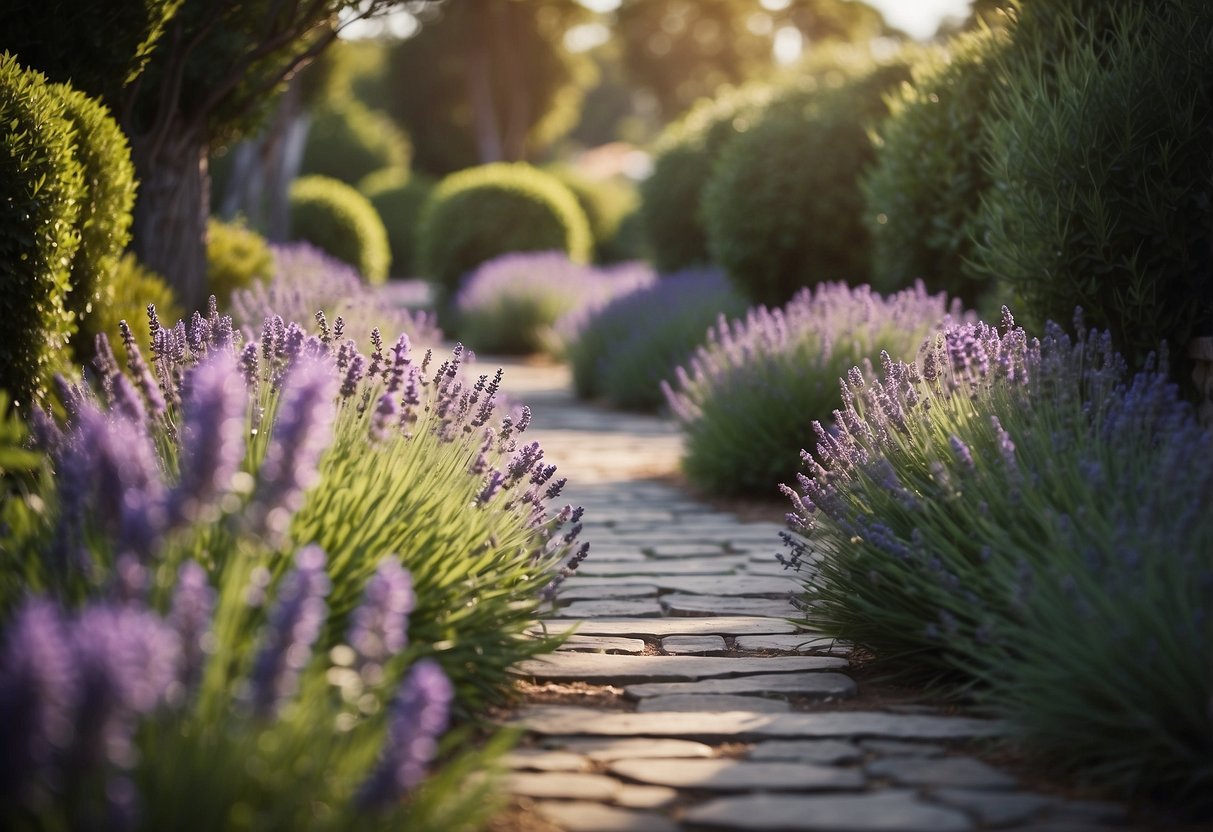
A pathway lined with lavender creates a calming and fragrant entryway to your garden. Lavender’s purple blooms and soothing scent make walking through your garden a serene experience.
Plant lavender in clusters along both sides of the path. This design not only enhances the visual appeal but also ensures the scent is released as you walk by.
Use low-growing varieties to keep the pathway clear. This makes maintenance easy and keeps the space tidy. For inspiration, check out this lavender-lined path design.
3) Japanese Maple Tree

A Japanese Maple Tree is a fantastic addition to your peace garden. Its stunning crimson leaves bring a pop of color and create a serene atmosphere.
You can find various types of Japanese Maples, each with its unique leaf shape and color. They are perfect for creating a focal point in your garden.
Placing a Japanese Maple Tree near a rock garden or water feature enhances its beauty even more. This tree not only adds visual appeal but also contributes to a calming environment.
4) Hanging Lanterns
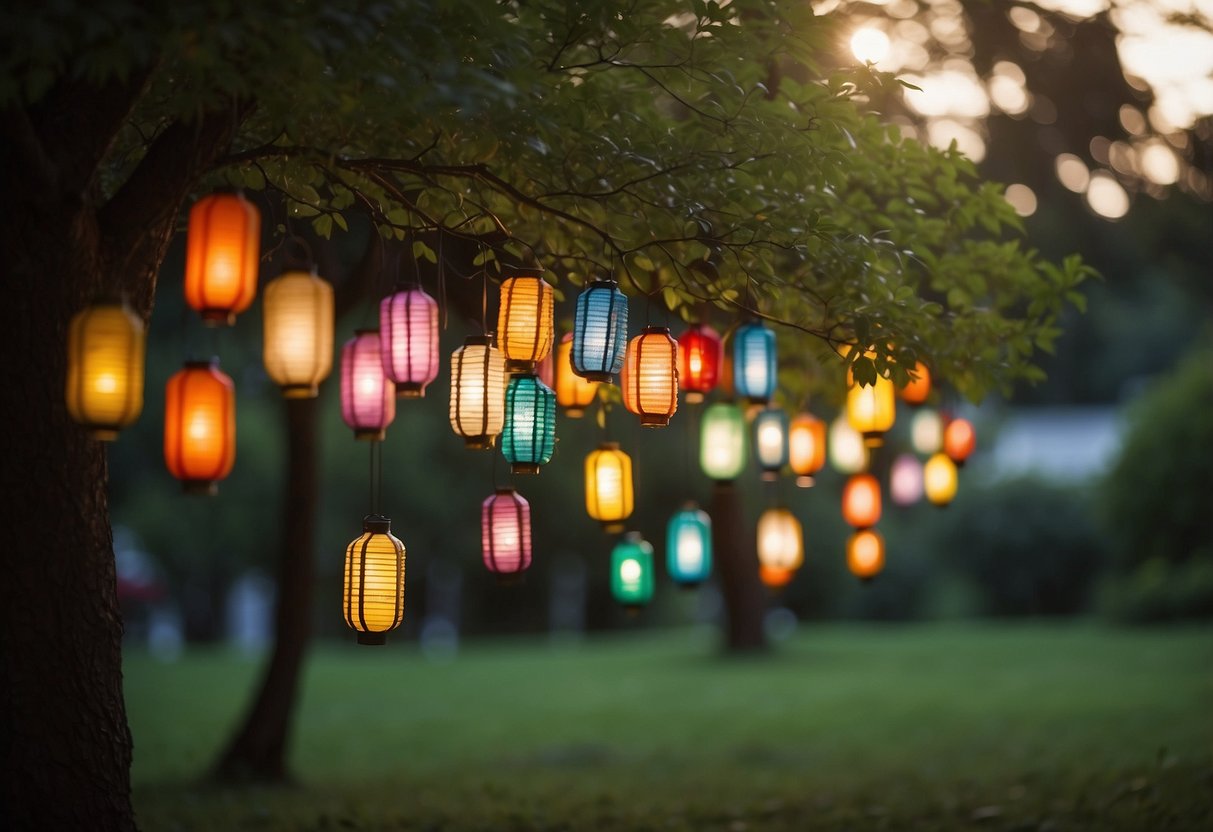
Hanging lanterns can add a warm, inviting glow to your peace garden. You can use lanterns made of materials like metal, glass, or bamboo.
Consider using solar-powered lanterns to save energy. Hang them from tree branches or pergolas to create a magical ambiance.
Personalize your lanterns by decorating them with paint or wrapping them with twine. For a unique touch, try writable mason jar lights to send messages or quotes that inspire tranquility in your garden.
5) Buddha Statue

Adding a Buddha statue can create a serene and peaceful atmosphere in your garden. Choose a statue that resonates with your sense of spirituality and complements the ambiance of your space.
Statues can be placed on a raised surface like a mound of stones or a marble slab to show respect. Position the statue facing your home for a welcoming effect.
Consider different types of Buddha statues. A laughing Buddha can bring joy, while a meditating Buddha symbolizes tranquility. Each statue adds a unique touch to your garden, making it a true sanctuary for relaxation and reflection.
For a striking feature, elevate the statue on a pedestal to make it a visual centerpiece. This emphasizes its importance and adds to the overall peaceful vibe.
6) Lotus Pond

A lotus pond can be a relaxing centerpiece in your peace garden. Start by choosing a sunny spot in your yard. The pond should get plenty of sunlight to help the lotus flowers thrive.
You can surround the pond with stones or plants. Lotus flowers need muddy soil and a few inches of water above their roots. Consider adding a small bench nearby to enjoy the view.
Adding a few koi fish can make the pond even more lively. These fish help keep the water clean and add a touch of color. Your lotus pond will be a serene spot to unwind.
7) Moss Covered Rock

Adding moss-covered rocks to your peace garden creates a tranquil and natural setting. The soft green moss adds a calming and serene touch to any garden space.
You can use tall moss rocks to line an elevated path. They provide a beautiful, natural border that enhances the overall look of your garden path.
Consider creating a moss waterfall feature with your rocks. Positioning them to resemble a cascading waterfall with lush moss growing over the rocks can be very soothing and visually appealing.
For more ideas, check out these moss rock garden designs.
8) Tranquil Waterfall
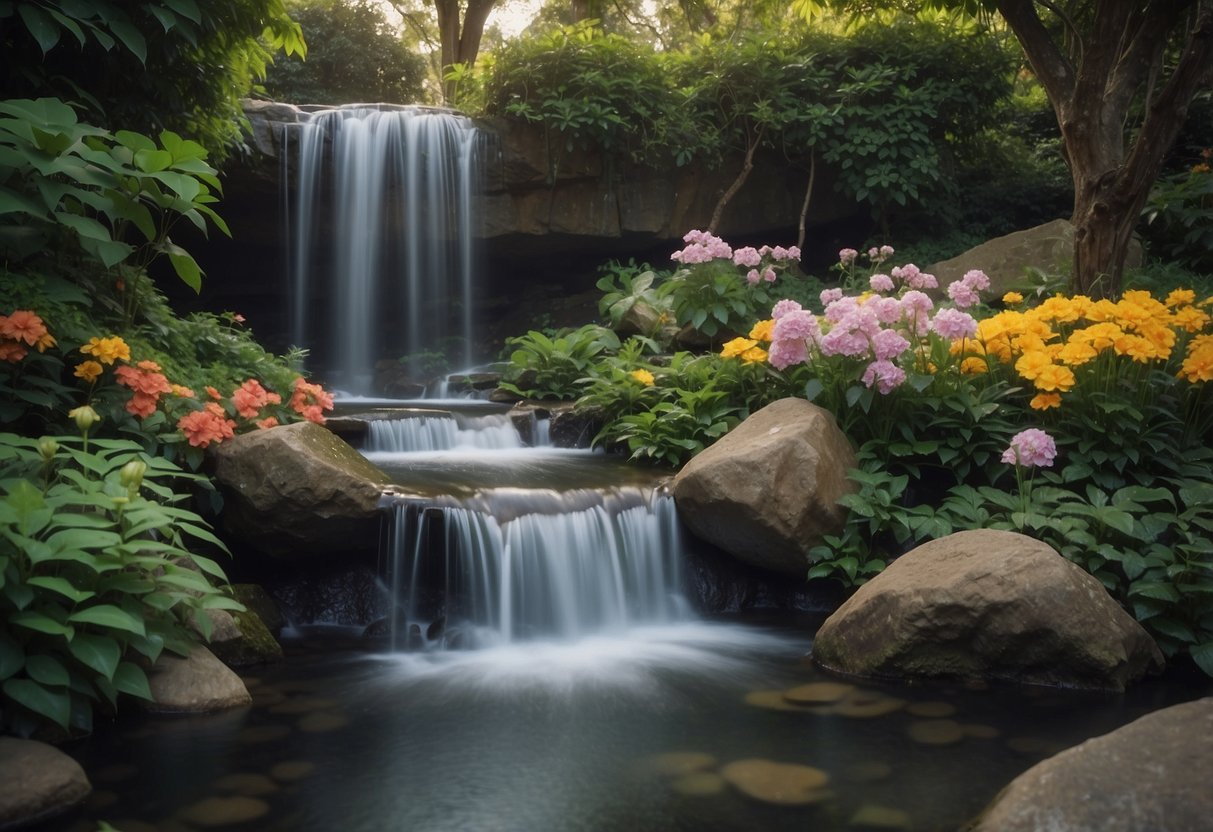
Adding a tranquil waterfall to your peace garden can create a soothing atmosphere. The gentle sound of water flowing helps mask outside noise, bringing an element of calm.
You can use natural stones to build the waterfall, making it blend seamlessly with the environment. Pair it with some surrounding plants for an added touch of nature.
Whether it’s a large feature or a small one, a waterfall can be a peaceful focal point. It invites you to relax and enjoy the serenity of your garden space.
9) Wind Chimes
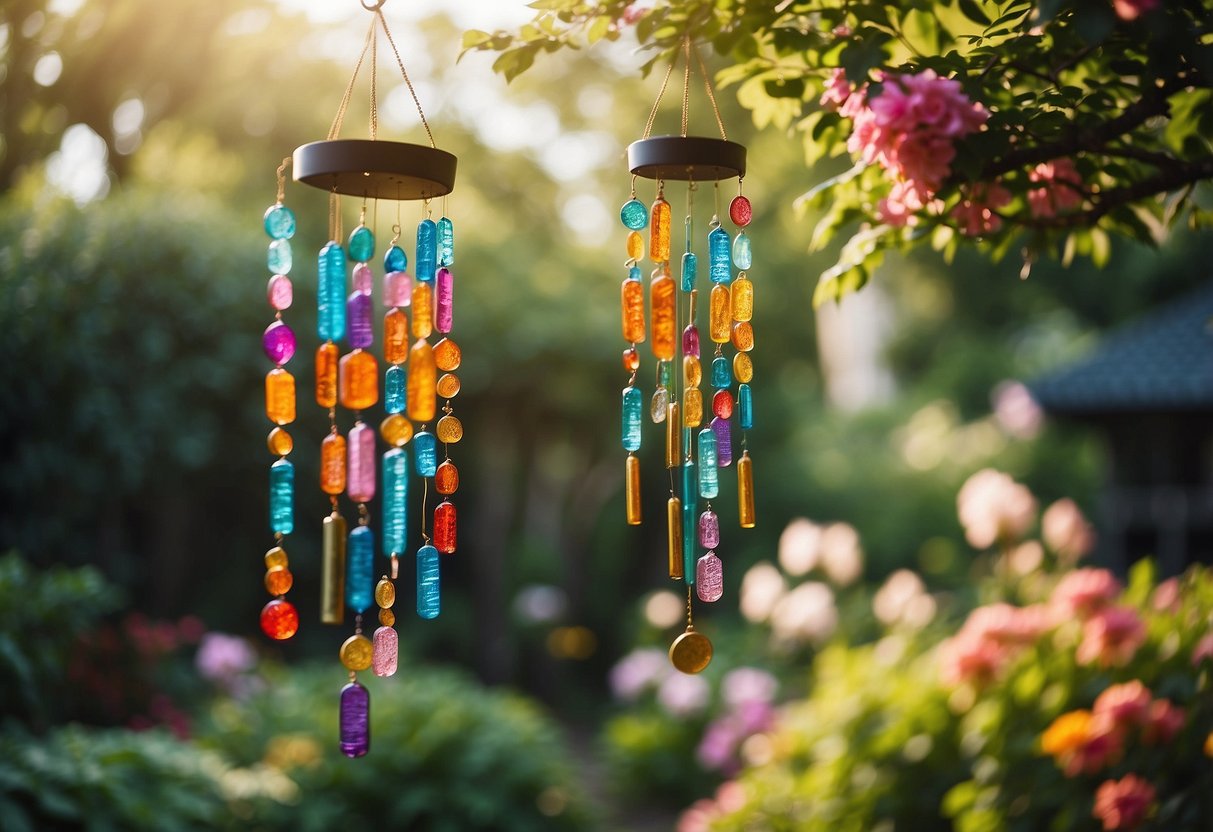
Wind chimes add a soothing sound to your peace garden. You can find many different DIY wind chime ideas that let you create custom designs. Use materials like glass, metal, or even seashells.
For a modern look, try a macrame wind chime with yarn and metal parts. Place your wind chimes where the breeze will catch them, adding a musical touch to your garden.
10) Meditation Corner
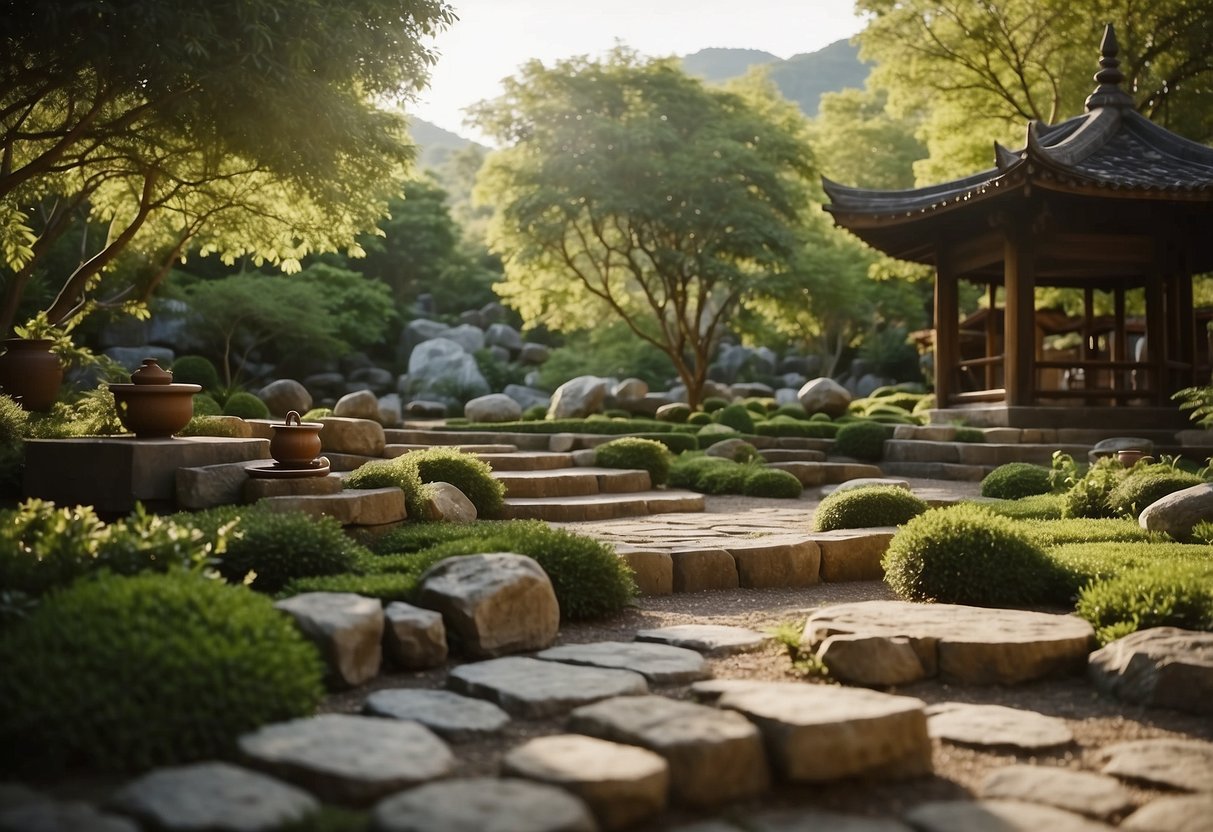
Creating a meditation corner in your garden can offer you a peaceful retreat. Start by picking a quiet spot, away from noise and distractions.
Add elements like potted plants and natural light to make the space inviting. A small water fountain or pebbles can be soothing.
You can also place lanterns or small statues for focal points during your meditation. These touches help enhance the peaceful ambiance and aid your relaxation.
Benefits of Creating a Peace Garden

Creating a peace garden can offer various advantages, including enhancing mental well-being, boosting physical health, and benefiting the community and environment.
Mental Health Advantages
A peace garden provides a serene space that helps reduce stress and anxiety. The natural elements, such as plants and water features, promote relaxation and mental clarity.
Meditation and mindfulness become easier in a peaceful setting. Quiet environments allow for reflection, helping you find inner peace and balance.
Gardening itself can be a therapeutic activity. It offers a sense of accomplishment and helps distract from daily worries, fostering a positive mood.
Physical Health Benefits
Engaging in gardening activities can improve physical health. Planting, weeding, and watering involve physical movement, which provides a moderate form of exercise. This can help improve flexibility, strength, and cardiovascular health.
Exposure to sunlight in a garden increases vitamin D levels, benefiting bone health and immune function.
Spending time outdoors can also improve sleep patterns. Natural light helps regulate your body’s internal clock, leading to better sleep quality.
Community and Environmental Impact
Peace gardens can be a wonderful addition to any neighborhood. They offer a communal space where people can gather, fostering a sense of community and belonging.
These gardens can also host events or workshops. Such activities bring people together and build stronger social ties.
Environmentally, peace gardens promote biodiversity. They provide habitats for various plants and animals, contributing to ecological balance. Using native plants in your garden can support local wildlife and reduce the need for chemical fertilizers and pesticides.
Design Principles for a Peace Garden

When designing a peace garden, it’s essential to focus on creating a tranquil environment. The right plants, water features, and quiet spaces will contribute significantly to the garden’s calming effect.
Choosing the Right Plants
Selecting plants that match the serene atmosphere is key. Sacred plants, such as lavender and sage, can symbolize spiritual beliefs and promote wellness. Bamboo, with its soothing rustle, adds a calming effect. Herbs like rosemary and thyme not only look beautiful but can also be used for healing purposes.
Consider native plants, as they are easier to maintain and blend well with the local environment. Tall grasses and evergreens provide year-round interest and privacy.
Incorporating Water Features
Water elements such as ponds, fountains, and streams can enhance tranquility. A small pond with floating lotus blooms creates a focal point and reflects peace. Statues near the water, such as those in a Buddhist garden, add a touch of respect and mindfulness.
Fountains with gentle water flow mimic natural sounds, which can help mask noise pollution. Simple birdbaths can attract wildlife and add to the garden’s serenity.
Creating Quiet Spaces
Designing areas for seating and meditation is crucial. Use stones, benches, or even simple cushions to create inviting spots to sit and reflect. A labyrinth walk, as mentioned in Spirit of Change Magazine, allows for mindful walking and contemplation.
Use natural materials like stone or wood to create pathways. These paths should lead to secluded corners where you can escape and relax. Enclosures like hedges or privacy screens can help create a more intimate feel, blocking out external disruptions.







